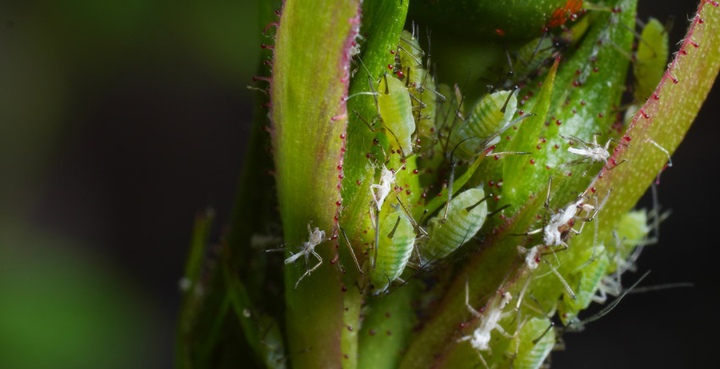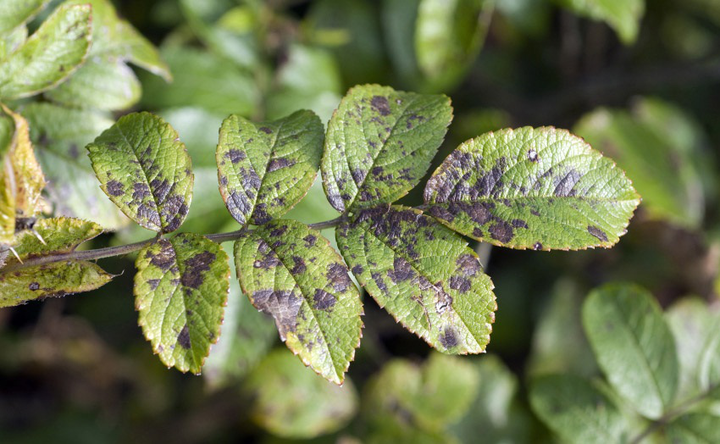
When growing any plant, there are various things that can go wrong.
Roses are no exception. In fact, these exquisite plant species are often the most susceptible to both rose diseases and pests.
Knowing the signs and how to treat these ailments is a must if you wish to encourage healthy growth.
Preventing rose diseases
To encourage healthy flowers, it’s always a good idea to pick disease-resistant varieties.
Despite costing a little more than the average rose, these particular variants have been bred to withstand all common diseases, which means they’re well worth the extra money.
As well as opting for disease-resistant rose varieties, it’s important to choose their location wisely. If planting alongside other plants in your garden, good air circulation is a must, which means giving your roses that extra bit of space! This will prevent pests from attacking the plants, as the majority of rose diseases attack plants that are stressed from overcrowding.
Early detection is another thing to keep in mind when considering the health of your rose plant. Keeping an eye on your roses on a daily basis is a great way to identify problems and to nip them in the bud before they turn into anything serious.

Common rose diseases to be wary of
Powdery mildew
This usually rears its head in the summer months, when days are experiencing warm and dry weather and the nights, cool and wet conditions. This disease can attack the leaves, flowers and stems and is more common in new growth. The effects of this rose disease includes curling and twisting leaves with a powdery residue and spots covering the base and top of the leaves.
Treatment: prevent this disease from occurring by watering roses first thing at the ground level.
This will allow them to completely dry by nightfall. Powdery mildew is also a common reaction to overcrowding, which is why it’s always important to give your roses room to breathe. Another tip includes regular pruning as this will help to encourage better air flow.
You may also wish to use a fungicide spray to help prevent powdery mildew from occurring. To decrease the spread of this rose disease, you can use an organic solution of one part milk to nine parts water, which should be sprayed directly onto the foliage.
Black spot
This is one of the most common diseases to affect roses. It’s particularly rife in warmer, humid weather as it’s a waterborne disease. Due to this fact, it tends to spread through irrigation. Signs your roses have this disease include a scattering of dark spots, which appear in the shape of circular brown or black spots on the tops of leaves.
This rose disease will attack the base of the rose bush first, before working its way upwards. Any leaves already affected by black spot will turn a shade of yellow, before falling off.
Treatment: this fungus tends to attack plants that are susceptible to wet conditions or lack good air circulation.
For best results and to avoid this rose disease from attacking, opt for roses that have been bred to resist black spot. Additionally, it’s important to water roses early in the morning at ground level. If your plant already has this disease, invest in a good quality fungicide spray, which will help stop the spread, whilst healing the rose bush.
Another tip includes pruning the affected areas to avoid the disease from spreading.
Rust
As indicated by the name of this disease, rust comes in the shape of orange spots, which affect the underside of the leaves and the canes. If the plant is severely affected, leaves may begin to fall off.
Treatment: use a fungicide to prevent the spread of this disease and give plants plenty of space when planting them alongside other species in the garden.
Mosaic virus
The first sign your rose bush is suffering from this virus is yellow mottling on the rose leaves. These leaves will then drop from their branches and shortly after, the plant will die, especially if the infection is severe.
Treatment: once mosaic virus sets in, the plant can’t be cured. To avoid this disease from spreading, it’s important to remove the affected plants from your garden and destroy them.
Common Rose Pests – what to look out for
If you’re wondering what’s been feasting on your roses, it’s likely one of several annoying pests!
Frequent rose inspection is a must if you wish to catch these bugs before they cause any significant damage. When checking for pests, look at both the soil and under the leaves.
Aphids
These tiny insects come in a range of colours, including every shade from green to black. They are hard to notice at a glance, but upon further inspection, you’ll see flea-like insects covering your roses.
Treatment: if you wish to remove these pests organically, simply blast your rose bush with a strong stream of water. This method will encourage them to eventually move on. Other alternatives include insecticidal soaps and ladybirds.

Rose slugs
Also known as ‘sawfly’ will attack rose leaves in a harsh manner, leaving only the skeleton of the leaf behind. When inspecting your rose plant, check the underside of the leaves. If your plant is suffering from this ailment, be sure to act fast as they get to work extremely quickly!
Treatment: they look similar to green caterpillars and can picked off leaves by hand. Otherwise, they can be treated with an insecticidal soap.
The leaf cutter
If you notice perfect circular holes in your rose bush, this is a sure sign leaf cutters are at work. These creatures use the foliage from rose leaves to build nests. Asides from being unsightly, holes in your rose leaves won’t do it any harm. These species are also great bugs to have in the garden as they are needed for pollination.
Treatment: simply leave them be, the damage is purely cosmetic
Spider mites
If your rose leaves are turning a shade of yellow and brandishing small white dots, this is a sign spider mites are at work. Almost invisible to the human eye, these minuscule insects can cause a great deal of damage. When checking for a spider mite infection, look on the underside of the leaves. You may also see a little webbing on the stems.
Treatment: use either insecticidal soap or neem oil.
Japanese beetles
In just a short period of time, Japanese beetles can cause a great deal of damage. With their metallic green and black bodies, these pests are unmistakable.
Treatment: invest in a good pesticide, remove the beetles by hand or use Japanese beetle traps to eradicate these beetles.

Although there are a number of things that can go wrong when growing roses, they’re well worth the effort.
They add colour, depth and grandeur to any garden, including both indoor and outdoor spaces, which makes them one of the most enjoyed plants to grow today. Providing you’re willing to put a little work in when it comes to nurturing roses, they’ll provide you with many years of joy.
Knowing how to identify and treat rose diseases and pests is a great place to start!
If you’ve grown a rose garden and you want to share it with us, let us know as we’d love to provide our readers with inspiration of what is possible and to show how beautiful it can be.